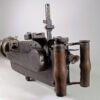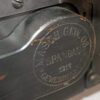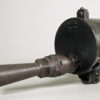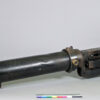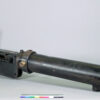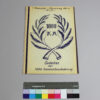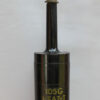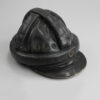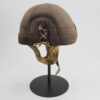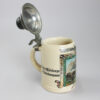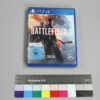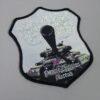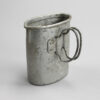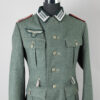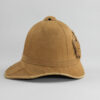Machine gun 08, 1916
Inventory number: DPM 4.141
The machine gun was one of the weapons that significantly shaped the warfare of the First World War and was the prerequisite for the introduction of tanks. All warring parties used machine guns in the First World War.
Rapid-fire weapons already existed in the 1860s, but they had to be mechanically operated by the shooter using a crank or lever. The first automatic machine gun was patented by US inventor Hiram S. Maxim in 1883. Maxim’s system was used in various conflicts and nations.
Based on Maxim’s machine gun, the German Reich produced the Maschinengewehr 08 (MG 08), which was named after its year of introduction, 1908. Unlike the mechanically powered machine guns before it, Maxim’s system fired continuously at the push of a button. Maxim’s “recoil loader” used the energy of the recoil generated by the weapon when the cartridge was fired to eject the empty case and reload a new cartridge. This technique allowed a very high rate of fire of up to 600 rounds per minute. One problem with such a high rate of fire is the heating of the barrel. To cool the barrel, the MG 08 had a jacket that could hold three to four liters of water, which made the weapon, which already weighed over 25 kg, even heavier. In order to transport ammunition and cooling water, at least one or two ammunition carriers per machine gun were required in addition to the gunner, with a total of five to six soldiers forming an MG unit.
A gunner could fire up to ten rounds per minute with a modern rifle at the time, which meant that the machine gun exceeded its rate of fire by a factor of 60. Already during their first missions in the Second Anglo-Burian War in southern Africa and in the Russo-Japanese War, it became clear that the increased firepower made an attack much more difficult. A well-entrenched defender could mow down masses of infantry and cavalry with a machine gun. Such attacks meant catastrophic losses and brought only minimal, if any, territorial gains.
This increased firepower of infantry weapons contributed significantly to positional warfare in the First World War. Alongside other new weapons such as airplanes and poison gas, a new machine was to overcome positional warfare: the tank. The British engineer and officer Ernest Dunlop Swinton even suggested the name “machine gun destroyer” for the British Mark I tank model. For their part, the tanks were equipped with machine guns. These supported the attack, but above all defended the vehicle as a moving fortress. During the First World War, there were British tanks with cannon and machine guns as well as those equipped only with machine guns.
This machine gun does not have a mount for installation in the field, as it is intended for installation in the A7V tank. The MG 08s installed in the A7V were mounted on a special mount, which corresponded to the pivot mounts on warships. It was connected to the gunner’s seat and could be swiveled 90 degrees. The six machine guns provided in the A7V were mounted on the sides and rear of the vehicle and were intended to protect the tank from all sides, with minimal blind spots. At the front, the A7V was equipped with a 57mm Maxim-Nordenfelt gun as standard. The ammunition for the machine gun was located under the seats and was intended to be 10,000 to 15,000 rounds, plus ammunition for the on-board weapon and the crew’s pistols and carbines as well as hand grenades.
Airships and airplanes were also equipped with machine guns, but the further development of much lighter, air-cooled machine guns was decisive for aviation. For the infantry, the heavy MG 08 was further developed into the “light” MG 08/15, which could only be carried by one man.
The Royal Prussian Rifle Factory, which manufactured the MG in Spandau, was dissolved after the First World War in accordance with the provisions of the Treaty of Versailles. The MG 08 and its variants were still used sporadically during the Second World War.
Object of the month
(short) stories from the depot
Unfortunately, many objects cannot currently be shown in the exhibition for conservation reasons. Here you will find unusual objects and exciting stories of special pieces from the depot


